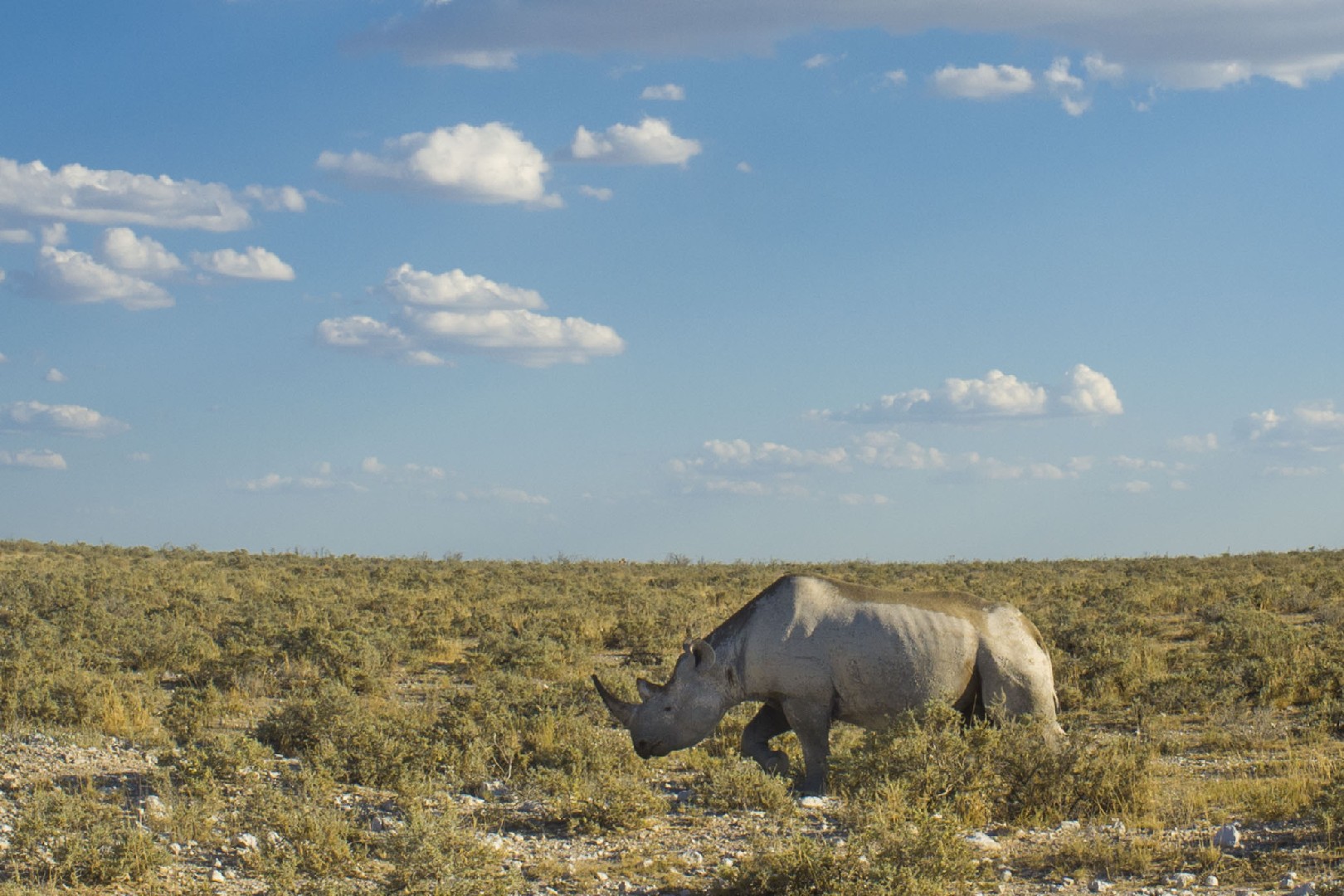Black rhinoceros
A species of Black rhinoceros, Also known as Western black rhinoceros, Black rhino Scientific name : Diceros bicornis Genus : Black rhinoceros
Black rhinoceros, A species of Black rhinoceros
Also known as:
Western black rhinoceros, Black rhino
Scientific name: Diceros bicornis
Genus: Black rhinoceros
Content
Description General Info
 Photo By Colin and Sarah Northway , used under CC-BY-2.0 /Cropped and compressed from original
Photo By Colin and Sarah Northway , used under CC-BY-2.0 /Cropped and compressed from original Description
The south-western black rhino, like all black rhino subspecies, has a distinct prehensile lip and is a browser. Its appearance is similar to other subspecies, the most important difference to them is a relatively broad head behind the eyes and minor features in the dentition. Other characters often mentioned, like body size or the straightness and size of the horns, are subject to individual variation. They also are most adapted to arid habitat and can be found in arid savanna and desert climates. 
General Info
Lifespan
35-50 years
Diet
Black rhinoceros is an herbivorous species that primarily feeds on leafy plants and shrubs. Favoring the foliage of Acacia, Euphorbia, and various grasses, it has a particular preference for woody plants and succulents, ensuring ample hydration and nutrients.
Appearance
Black rhinoceros is a large, barrel-shaped mammal with a thick, grey-brown, almost hairless skin. They have two distinctive horns, the frontal one being longer. This divergent mammal has a humped shoulder, sturdy legs, and a prehensile upper lip akin to an elephant’s trunk. Males are generally larger and have thicker horns than females. There's little variation between subspecies in appearance, but the length of the horns can vary.
Behavior
Black rhinoceros are predominantly solitary and nocturnal animals, browsing and drinking during the night or cool mornings and evenings. They're territorial, with males marking territories using their dung and urine. Aggressive interactions between males are common but rarely result in fatalities, evidence of a ritualized, non-lethal combat behavior. They also communicate with a series of snorts, whines or growls.
Population
Increasing
Scientific Classification
Phylum
Chordates Class
Mammals Order
Odd-toed hoofed mammals Family
Rhinoceroses Genus
Black rhinoceros Species
Black rhinoceros